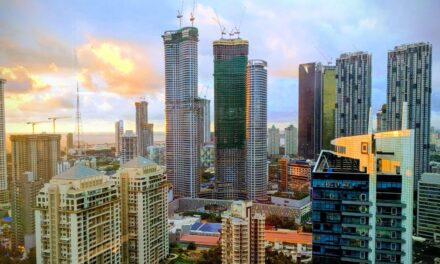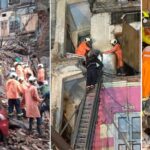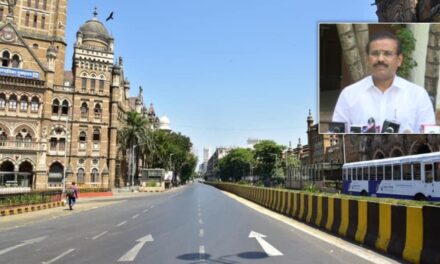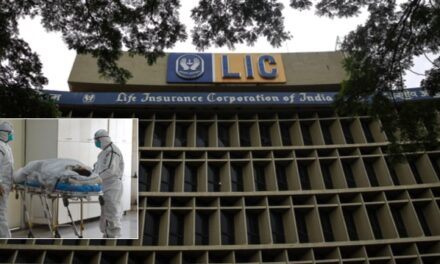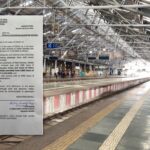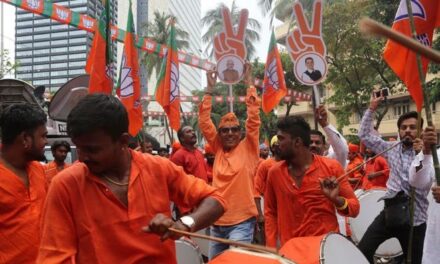Rail Roko Aftermath: At least 18 injured during protest, Railway Minister addresses concerns
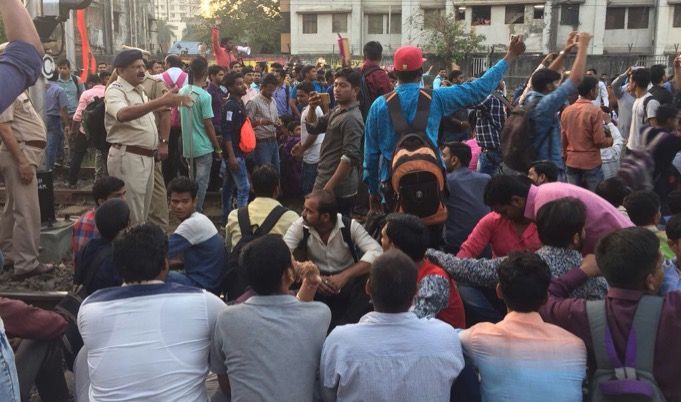

At least 11 officials were injured in stone pelting (Picture Courtesy: Udit Goel)
Following the rail roko protest earlier today, which lasted for nearly four hours and left at least 18 injured, Railway Minister Piyush Goyal said the agitation by students has been called off and appealed them to apply for the ongoing recruitment drive that ends on March 31.
With scores of agitating students bringing the rail service in the metropolis to a halt early this morning, the minister said all applicants should get a “fair and equal opportunity” to serve the country.
One of the major demands of the agitating job aspirants, mostly comprising those who have passed the Railway Act Apprentice exam, is scrapping the 20 percent upper limit for hiring.
Addressing a hurriedly-called press conference, Goyal said the 20 percent posts were reserved in keeping with the “various judgements pronounced by the Supreme Court from time to time and as per section 22(1) of the Apprentices Act”.
The 20 percent posts are reserved for ‘course completed act apprentices’ who were already engaged in railway establishment under the Apprenticeship Act.
Indian Railways is currently in the midst of a massive recruitment drive to fill over 90,000 Group C and Group D posts and the minister urged them to apply for these jobs, the last date of which is March 31.
This is the single largest recruitment ever undertaken by the railways in India.
Earlier in the day, hundreds of agitated students blocked rail traffic, including suburban services between Matunga and Dadar stations, causing difficulties to lakhs of commuters.
The students blocked the rail track at 7 AM this morning, forcing railways to stop the suburban as well as express trains in the affected section between Matunga and Chhatrapati Shivaji Maharaj Terminus (CSMT).
Entire four lines were affected between Matunga and CSMT. Police and railways officials are having talks with them, an official said.
“There has been no recruitment for four years. We are struggling from pillars to post. Over 10 students have committed suicide. We cannot let such things happen,” a student, who was part of the protest, said.
“We will not budge from here until and unless Railway Minister Piyush Goyal come and meet us. Our several prayers made to DRM (Divisional Railway Manager of Mumbai Division) have failed,” another student said.
Attempting to restore normalcy, the local police resorted to a mild lathi-charge to disperse the protestors. Some retaliated by pelting stones at the police.
At least seven students sustained minor injuries in the lathi charge and 11 officials were injured during the stone pelting.
5 Government Railway Police (GRP) personnel and 6 Railway Protection Force (RPF) personnel injured in stone pelting during the agitation of railway job aspirants in #Mumbai. pic.twitter.com/0Xu1wzsSjC
— ANI (@ANI) March 20, 2018
The injured officials included five GRP officials (Sr.PI Nitin Bobade, P.I .Satav, PSI Mane, WPC Sanap and WPR Puralkar) and six RPF officials (Sachin Mor, Satendra Kumar, Manoj Yadav, Jasvir Rana, Dharmendra Kumar and Prakash Landage).
Mumbai’s famous Dabbawalas were also stranded at various CR stations right from Kalyan in Thane to Dadar in Mumbai. The BEST deployed extra buses to ferry commuters to and from various points like Dadar, Matunga, Kurla, Sion and other stations.
Meanwhile, Rail Yatri Parishad chief Subhash Gupta attacked the railways for “complete intelligence failure” and for the absence of railway officials.
After calling off the protests, many students met MNS Chief Raj Thackeray to discuss the issue. The MNS supremo has not made any statement about his meeting with the job aspirants as publishing this.
#Maharashtra: MNS Chief Raj Thackeray met the railway job aspirants in Mumbai. The protesters staged a ‘rail-roko’ agitation between Matunga & Chhatrapati Shivaji Terminus railway station. pic.twitter.com/bhmE4NnMUt
— ANI (@ANI) March 20, 2018
More than 4.5 million commuters were badly hit for the second consecutive day following a strike called on Monday by drivers of cab aggregators and app-based taxis that disrupted Mumbaikars’ schedules.
With agency inputs


